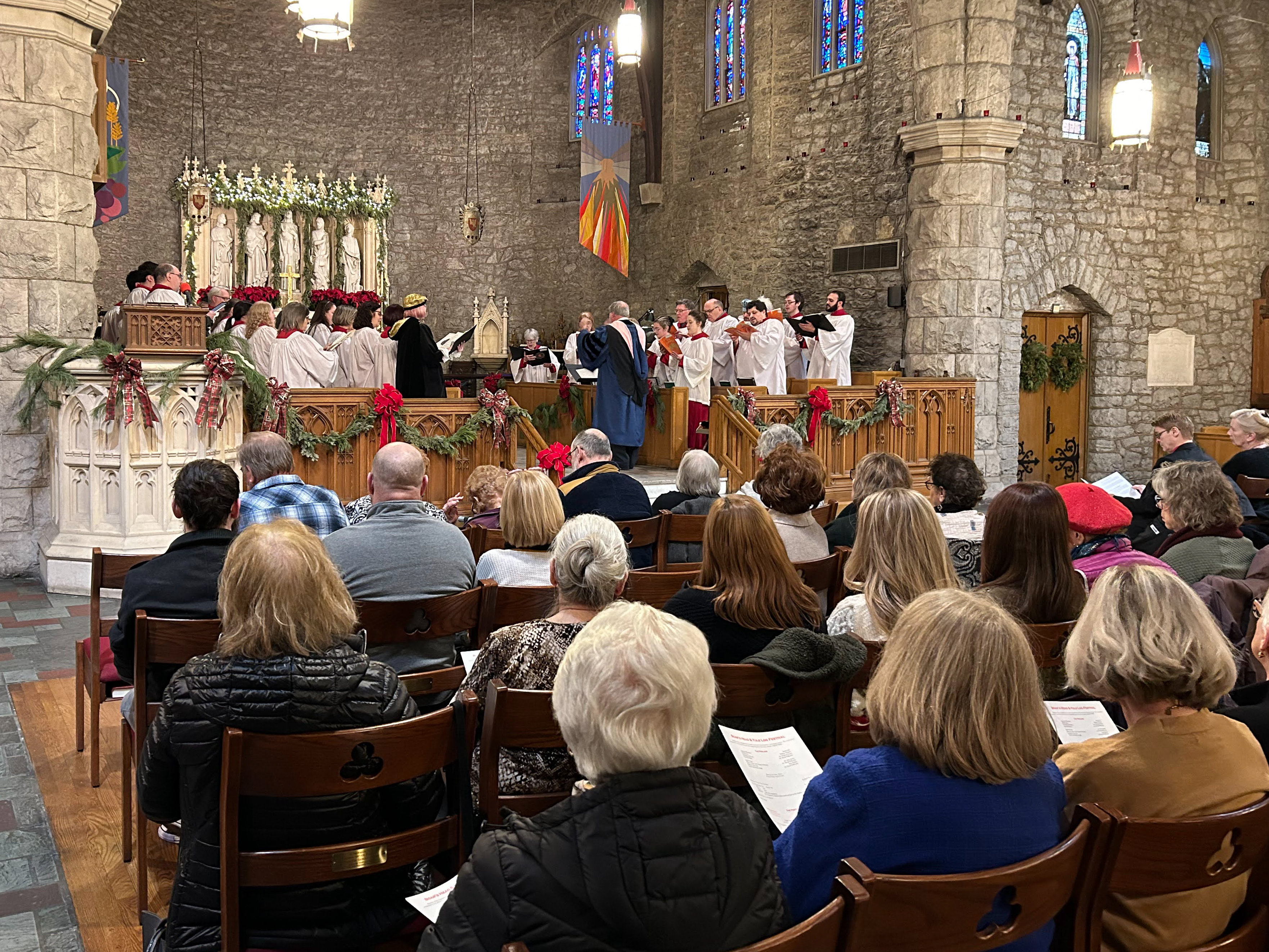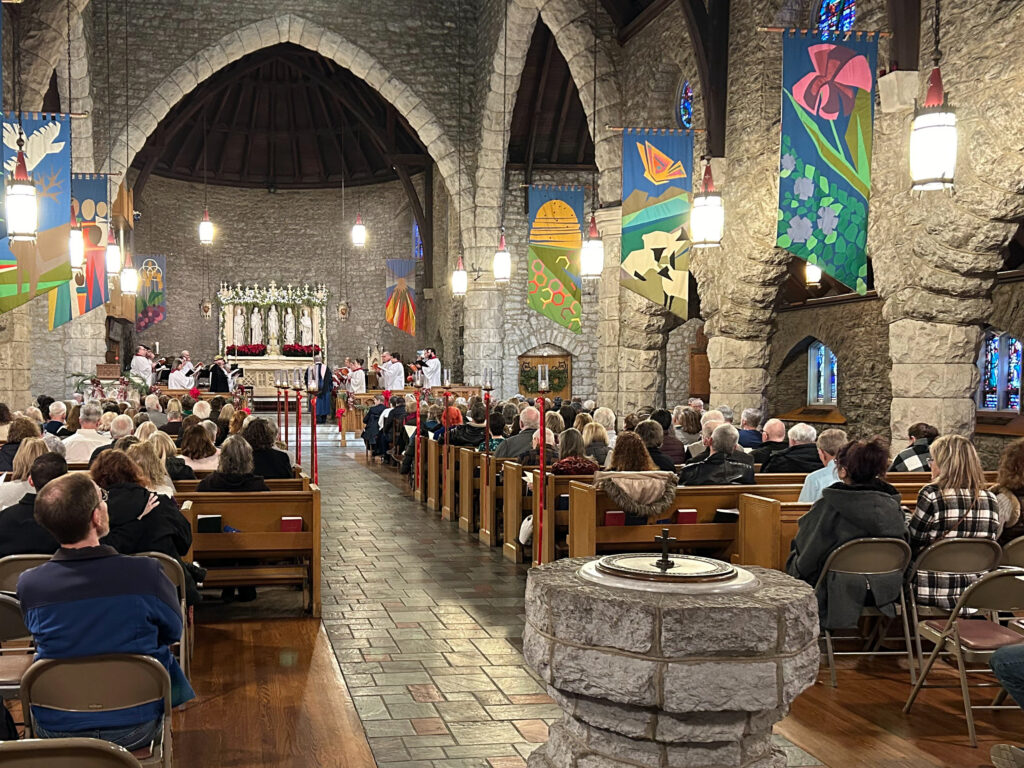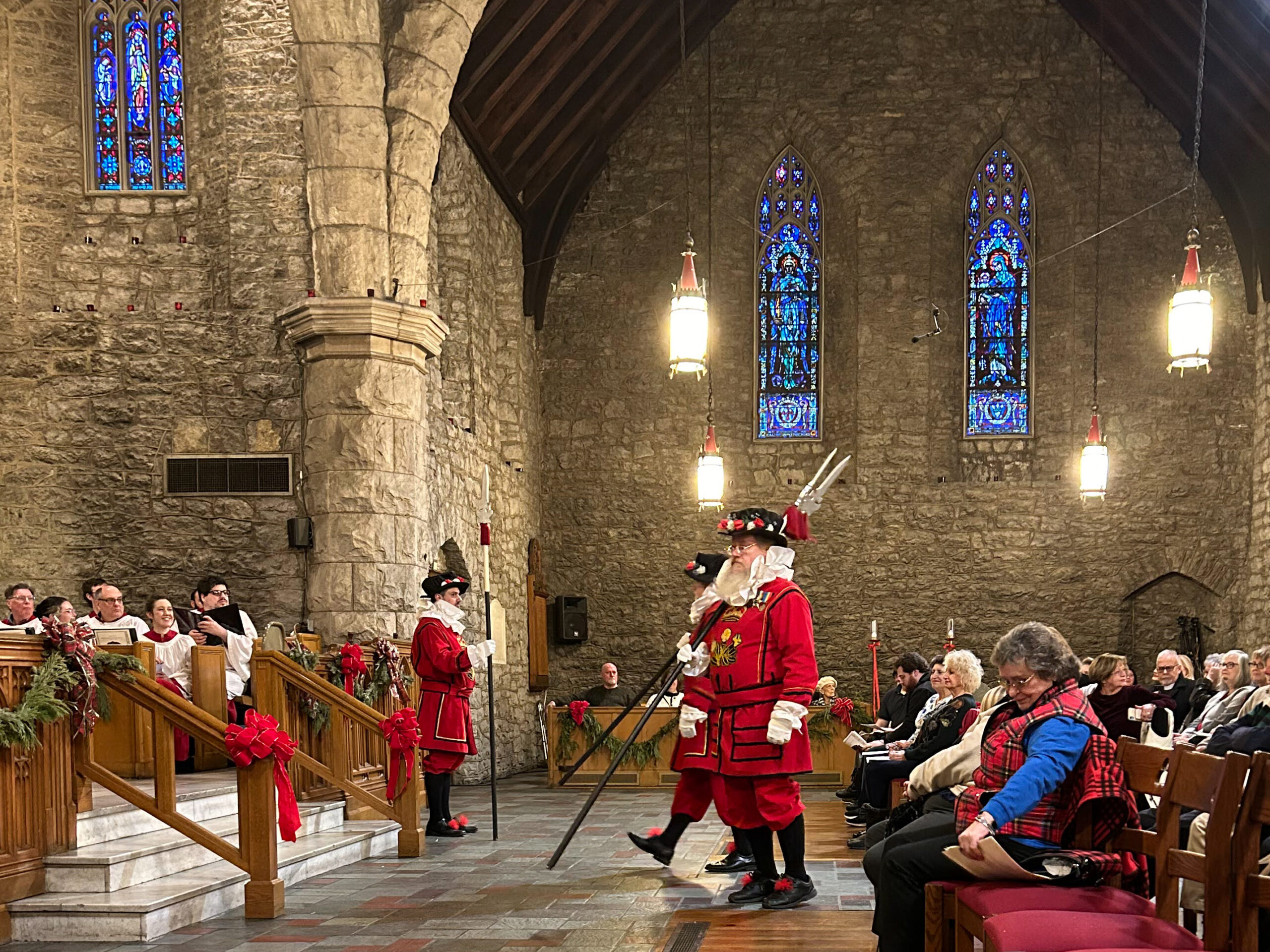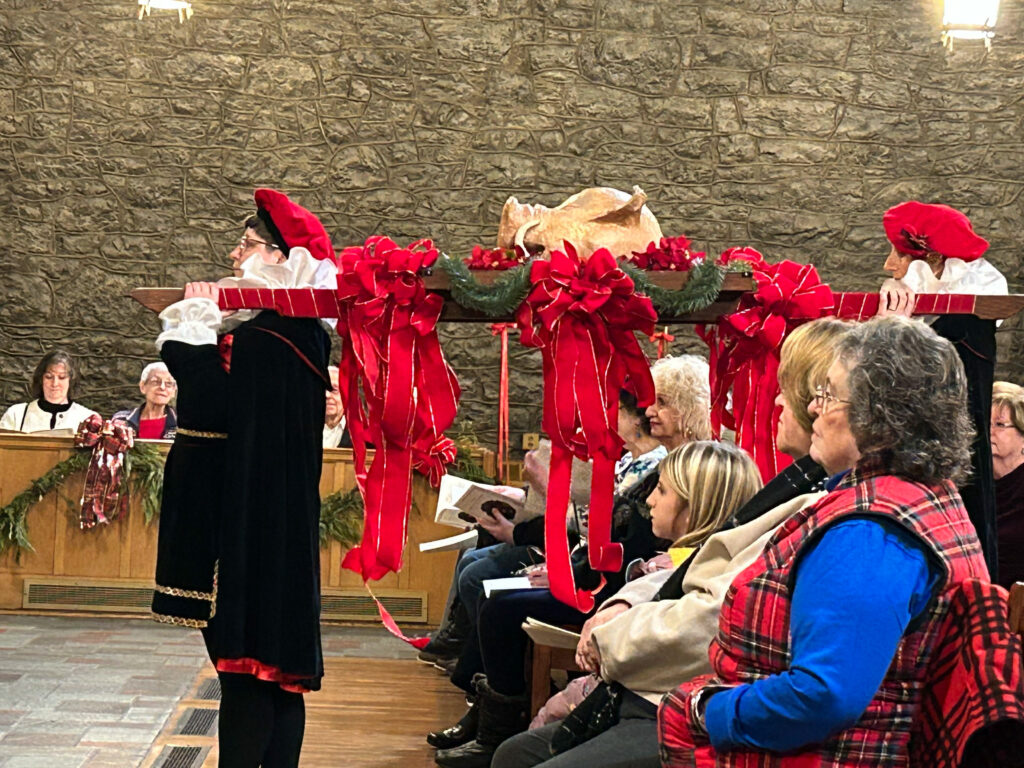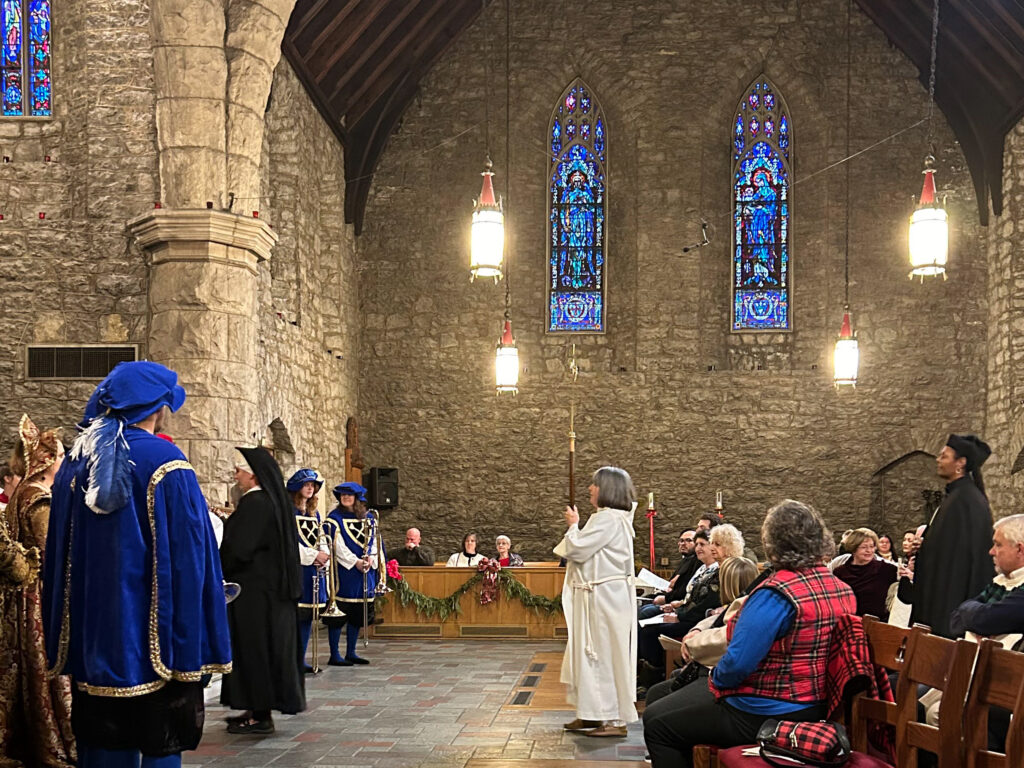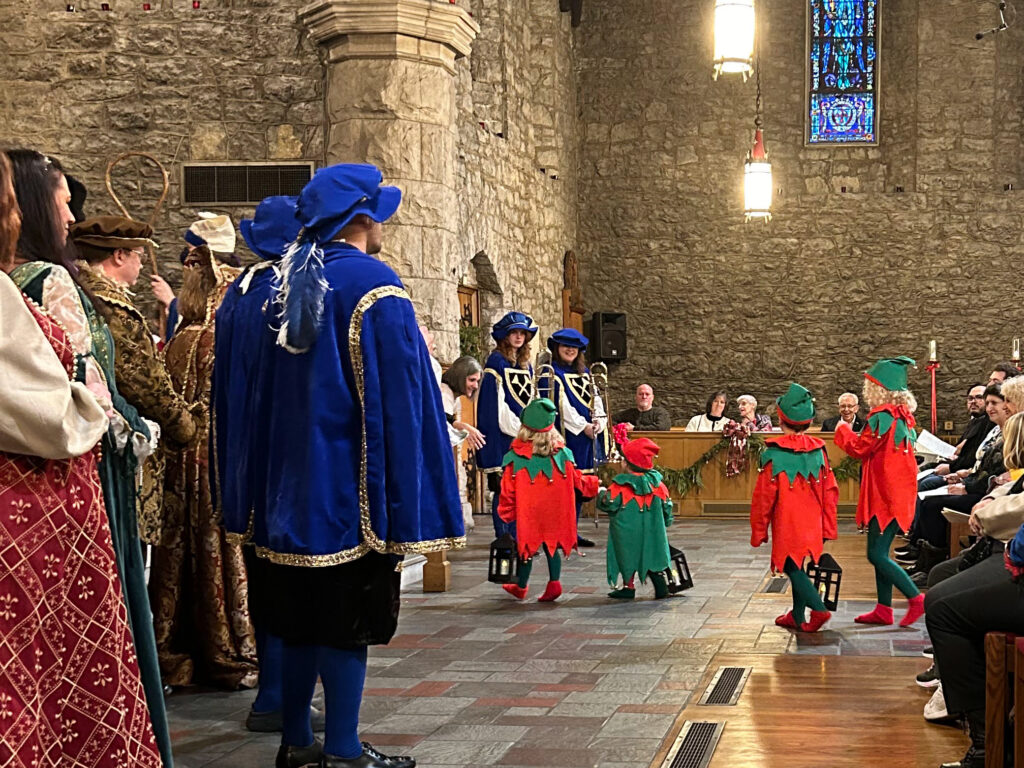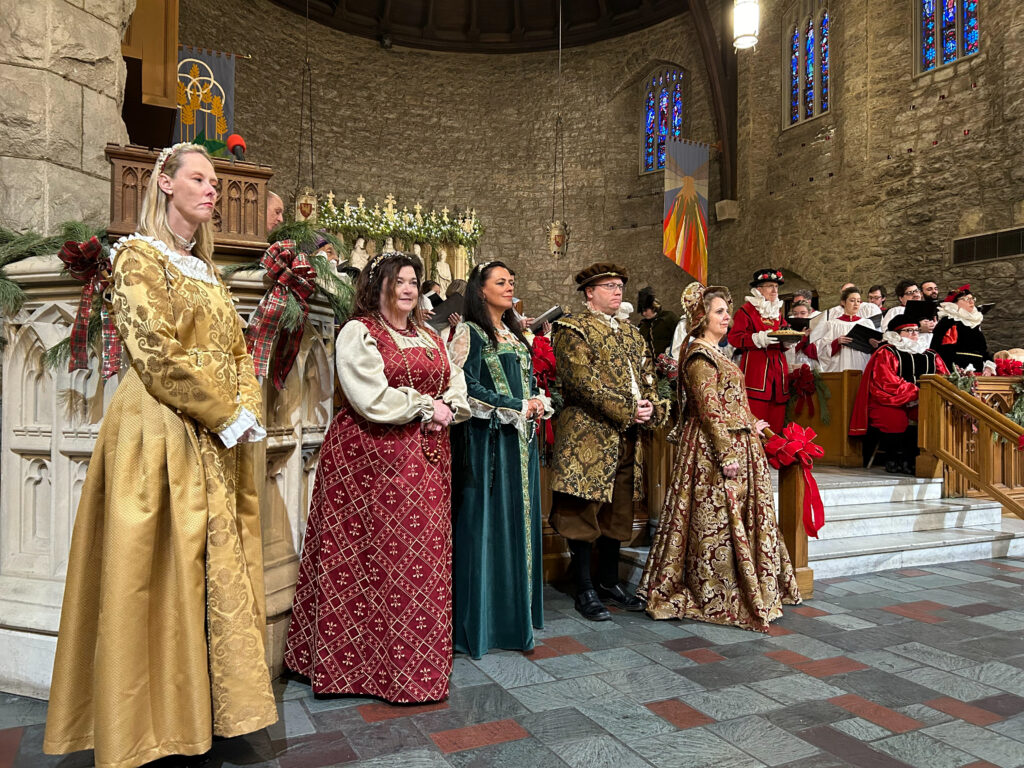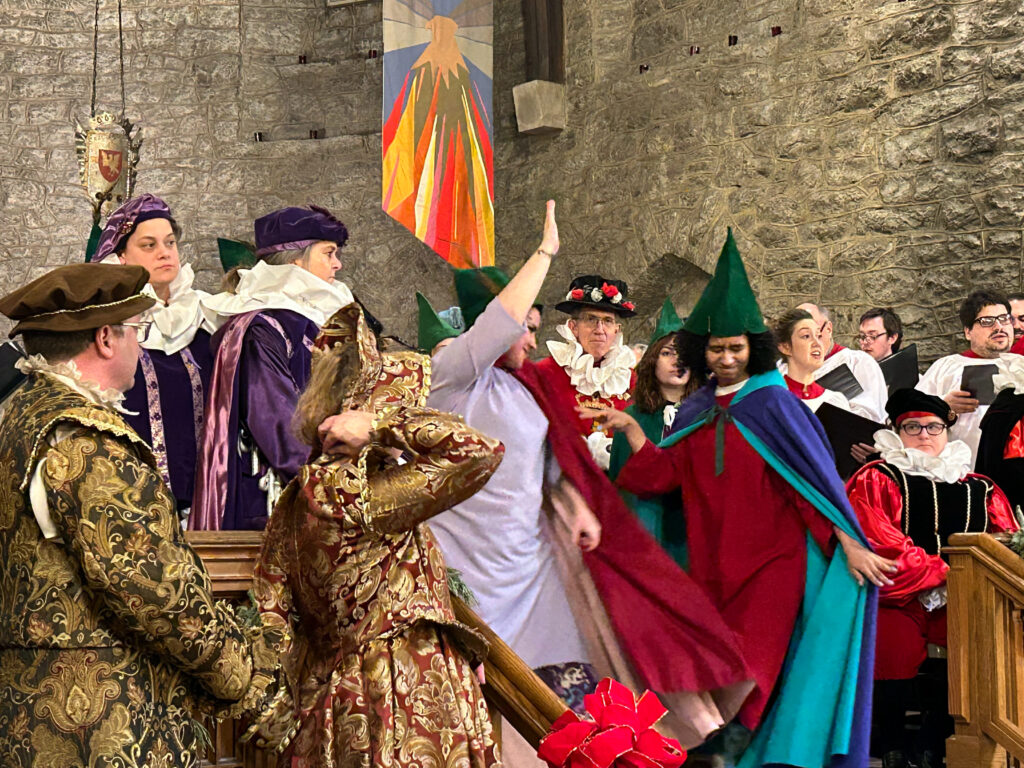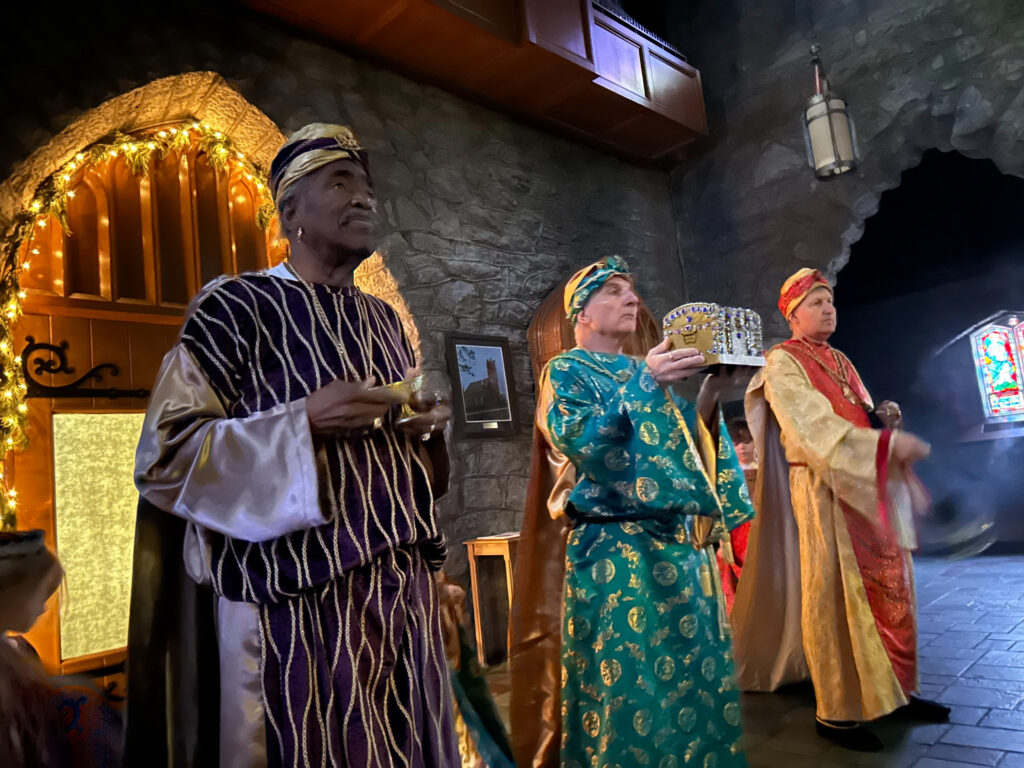2025 Boar’s Head Festival
We are delighted to have the 62nd Annual Boar’s Head and Yule Log Festival scheduled for Sunday, January 5, 2025.
Performance tickets can be purchased by credit card through Eventbrite using the form below. Performance tickets can also be purchased directly from the church in person or by phone. Please see details below the Eventbrite form.
Tickets can also be purchased by cash or check in person at the church office during regular office hours Monday – Friday 9am-4pm.
The Festival & Its History

A tiny sprite bears a lighted candle into the darkened church symbolizing the coming of the Light into the darkened world. Representing the Church, the Rector receives the light, and from this flame rise the lights of the altar, and then the lights of the Church itself.
A brass fanfare announces the entrance of the Boar’s Head company. Next come the waits, medieval carolers, praising the Incarnate Lord; then King Wenceslas and his page; the woodsmen with the Yule Log, ridden by a tiny sprite; the shepherds searching for the Christ; and finally the Three Wise Men, bearing their gifts of gold, frankincense, and myrhh.
When all have assembled, the haunting hymn of Christina Rosetti, In the Bleak Midwinter, is sung by both cast and congregation. To the music of the Eucharistic hymn Let All Mortal Flesh Keep Silence, all kneel in adoration of the Lord of Lords and King of Kings. The church is darkened and the Epiphany star shines over the altar.
The history of the Boar’s Head reaches back into the days of the Roman Empire. The Boar was the first dish served at great Roman feasts. In Norman England, the Boar was the sovereign of the great forests, a menace to man and a symbol of evil. The serving of the Boar’s Head thus represents the triumph of Christ over evil, begun with his birth at Christmas and manifested as Savior of the whole creation at Epiphany. By the 12th century the symbolism and ceremony of serving the Boar’s Head at Christmastide was fully developed.
The Yule Log, lit from last year’s embers, representing the warmth of the family fireside and the continuance of human life and concern, has from earliest times symbolized the rekindling of love. The old year passes, the new is born, yet the same love lights each.
No one knows who planned the first Boar’s Head procession. Its earliest origins seem to have been traced to Oxford University, founded circa 1167, and specifically to Oxford’s Queen’s College, endowed in 1340 (some sources say 1341), which recorded a Procession of the Boar’s Head by the mid-14th century. Within three or four centuries of evolution at both Oxford and Cambridge Universities, other elements were gradually added to the celebration: the mince pie, the plum pudding, the Yule Log, the shepherds, the waits, the Three Wise Men, King Wenceslas, the pipers, drummers, and the Beefeaters (the ceremonial guards of the Tower of London). The Boar’s Head & Yule Log celebration was a popular Christmas event in the great English manor houses of the 17th century. Eventually, the custom was carried to colonial America.
In 1892 the Rev. Edward Dudley Tibbets, D.D., instituted the Boar’s Head & Yule Log Festival at the Hoosac School, Hoosick, New York, an Episcopal institution. This version, with some of the accompanying music by Frank C. Butcher, is the main source of the Festival as celebrated at St. John’s Episcopal Church. For more than four decades, the music for the format utilized here was selected, adapted, arranged, and composed by Dr. Ronald L. Gould, Organist-Choirmaster at St. John’s from 1960 through 2002. Upon stepping into the role of organist-choirmaster in 2003, Dr. Richard Konzen determined to carry on in Dr. Gould’s footsteps; thus although many of the specific musical choices change from year to year, certain traditional local elements remain constant and we continue to use Dr. Gould’s music and format.
May this offering of praise to Jesus Christ at his Epiphany recall to us all the great gift of love given us by the Father in the person of his only begotten son, Jesus Christ, our Lord.
Photo Gallery
